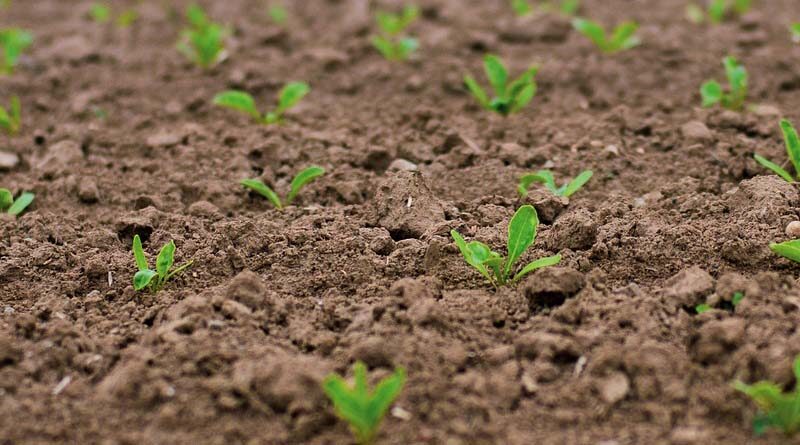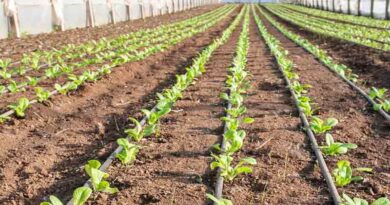Understanding Research and Evaluation system of improved crop variety release in India
Guest Author: Dr. Kuntal Das, Senior Specialist, International Rice Research Institute, South Asia Regional Centre, Varanasi (Uttar Pradesh), India
05 January 2022, New Delhi: Agriculture is the mainstay of India and improved agricultural practices principally depend on the use of newly evolved improved crop varieties. In Indian scenario, a robust and statutory varietal release system is working where notification and denotification process are playing a crucial role in quality regulation of seed. Crop research institutes of ICAR (Indian Council of Agricultural Research), SAUs (State Agricultural Universities) and private seed companies are the main pillars to discover and develop improved varieties in India. The thumb rule is, improved variety must have a superior yield compared to the existing one (national and state check varieties) and this is ensured via several multilocational evaluations at stage wise levels.
India is a fast-growing economy and agrarian country. Almost 70 per cent of the Indian population depends on agriculture and its allied sectors to obtain employment and sustain livelihood. Seed is considered as a basic and key input in agriculture. To reduce the dependence of food on foreign countries, doubling the farm income and to meet the nutritional demand of expanding population and to become self-reliant in food grain production, Indian Government established All India Coordinated Crop Research Projects (AICCRPs) and other institutes in a systemic manner to produce a large number of improved varieties with assured availability of quality seed for all major crops. The ultimate intention was to introduce the newly evolved high yielding cultivars to the hands of resource-poor farmers for region wide cultivation in the area of their adoption.
Also Read: Ban order issued on ‘Bio’ related agri-inputs in Khandwa
The Governing Bodies
The Government of India acknowledged seed an essential commodity under the Essential Commodities Act, 1955. On October 1964 Varietal Release System (VRS) came into existence with the formation of the Central Variety Release Committee (CVRC) at the national level, and State Variety Release Committees (SVRCs) at each state level. A Central Seed Committee (CSC) was established under the Ministry of Agriculture, Cooperation and Farmers Welfare provided in the Seeds Act, 1966. The functions of the CVRC were taken over by the CSC in 1969 to ensure the quality of seeds on sale and notification of the varieties. To perform the function at central level for release/notification, provisional notification and de-notification of varieties, CSC constituted a Central Sub-Committee on Crop Standards, Notification & Release of Varieties for Agricultural Crops and Horticultural Crops. To perform similar functions at state level, State Seed Sub-Committee (SSSC) was constituted.
Understanding the Indian system of variety release, evaluation process at a different level, and the importance of notification and denotification.

1. Discovery
Improved genetic materials are discovered and developed by the concerned plant breeders/ agencies through scientific pathways with extensive breeding programs for the benefit (food and nutritional security) of humankind. Different conventional and advanced plant breeding methods are being used by ICAR or non-ICAR national institutes, SAUs, private national or multinational companies etc. to generate elite materials of high yield potential, better nutritional quality and other value added traits. Developed elite materials are being tested by the concerned plant breeder/s at their research stations for three to four years in replications for stability and selected superior cultivars enter into the All India coordinated crop improvement projects (AICCIPs) trials for further testing in multi-environments across the country.
2. Development and Testing
First AICCIP was started way back in 1957 by ICAR on maize crop. In general, the three-tier system of multi-location evaluation is used for three years except perennial fodder crops (which requires four years-one for crop establishment and three for evaluation) in India. Multilocational trials are conducted by the Project Coordinator (PC)/ Project Director (PD) of AICCIP with the help of concerned Principle Investigators (PI). The AICCIPs have been developed for all the major crops including forage crops. All AICCIP trials are well organized, systematic and conducted through a uniform testing procedure across the centers as per crop standard.
A. Three Tier System of evaluation
The AICCIP centers for various crops are located at ICAR institutes or State Agricultural Universities (SAUs) or other volunteer centers recommended by AICCIP workshop based on covered crop area, adaptability, and agro-climatic condition etc. It involves following steps trialing steps.
A.1 Initial Varietal Trial (IVT)
All the entries, which found superior in respective station trials under breeding institutes, would be introduced into the IVT which to be done for 1 year. These entries would be used for multi-location trials along with three checks (national, zonal and local) for efficient evaluation across the centers. The IVT trials are conducted in such a manner that minimum difference of yield (5–10%) and other ancillary traits can be measured. An IVT includes the maximum number of locations across the country to evaluate varietal adaptation and performance. The number of testing locations varies with crop across the zones. A team of scientists (plant breeder, agronomist, pathologist, entomologists etc.) monitor all the IVT trials as per the recommendation of the project coordinator who constitutes this monitoring teams. Entries which are superior to the best checks in terms of yield and other related traits will be promoted into the advanced varietal trial-I.
A.2 Advanced Varietal Trial-I (AVT-I)
Based on superiority (5–10%) over the best performing check, entries enter into the AVT-I from IVT. The number of tested entries in the AVT-I are less than IVT. The number of testing locations should be more as compared to IVT in a given zone for more realistic data on yield and other economically important traits, varietal adaptation, biotic and abiotic stress tolerance, quality parameters, etc. National, zonal and local checks (which were used in IVT) are used for critical analysis along with the entries. Same as IVT, monitoring team are deputed by the PC/ PD at different growth stages of the crop and observed data are submitted to the concerned PC/ PD. Based on the performance of entry over the best performing check-in the respective zone, the superior entries would enter into the AVT-II.
A.3 Advanced Varietal Trial-II (AVT-II)
In AVT-II, all the requirements shall be fulfilled as like AVT-I. The seed technology center develops descriptors of the varieties which help in the seed certification process. All the processed and analyzed data on yield and other related traits, across the locations/ centers (cooperatives and volunteer) are submitted to the PC. On the basis of these data, annual reports are being made in each crop. All the data of superior entries are comprehensively discussed in the annual workshop/ national group meetings by the PC/ project director. After completion of the AVT-II, the concerned breeders are informed to submit varietal proposal to CVRC/ CSC based on the performance of their entries during three years of evaluation.
3. Varietal Identification
Based on three years performance, best performing test entries are identified in the annual crop workshop or national group meet. The Zonal Coordinators and Principal Investigators attend the national group meet to provide wider aspects of information on the selected varieties. After the approval from Deputy Director General (Crop Science) of ICAR, a “Varietal Identification committee (VIC)” constituted in advance of annual workshop or national group meet. Principal investigators (PIs) of different disciplines can assist in the process of discussion but they do not have the right to vote. Only committee members have the right to cast vote. The VIC provides detailed information on recommended entries to the Central Sub-Committee on Crop Standards, Notification, and Release. This committee has sole right to release and notify the best-performing entry into national wise or zonal wise based on the varietal eligibility criteria and by recommendations of the VIC.
4. Release and Notification
Central Sub-Committee releases varieties as per the benefit of the stakeholders/ farmers and need of regional, zonal or national importance, and the State Seed Sub-Committee releases varieties beneficial for a particular state. Notification of variety is compulsory on regulating the seed quality under the provision of Seed Act, 1966. Notification usually authorizes certified seed production throughout the country, by private or public seed multiplication organizations. Once the CSC accepts the notification proposal, the varieties/ hybrids are released for the concerned agro-climatic zone(s) (which may cover one or more number of states or nationally). Simultaneously, a variety must be notified for seed certification purpose in the country.
Being agriculture as a state subject in India, centrally released varieties are not directly accepted by all the states for which they have been released. Each state has its own regulatory system which they have to follow for varietal release in the state. They have to pass through all the steps of the concerned state release procedure before they approve for cultivation in the state viz., state wise multi-location trials for three years and adaptive trials based on the requirement. The notification requires that the variety must have been tested at least for one year in the AICCIP trials and recommended for release in the state by the AICCIP Varietal Identification Committee.
Importance of Notification
The purpose of release of cultivars is to introduce the newly evolved varieties to the public for general cultivation in the region in which it is suitable. It enables the farmers to choose cultivars for cultivation in a region. In other words, release of a cultivar is in the nature of a recommendation to the farmers for its adoption. However, since only notified varieties will be under the purview of Seed Law Enforcement, hence it is necessary to bring the seed of a particular crop variety under notification system. The seed inspector can only draw a sample from notified variety for analysis and ensure the seed quality. A released variety cannot come under seed chain without notification by the Gazette of India. Therefore, these issues will make the notification as necessary requirement for other things to act on it. Notification is also prerequisite for production of certified seed which ensures high quality of seeds to the hands of a farmer. After notification, variety becomes asset of government of India. Notification also helps in the genesis of original variety based on its pedigree and regulates any kind of infringement in the later stages of varietal promotion.
De-notification of varieties
Released varieties can be de-notified if they are not performing well in the area of their adoption or have been in cultivation for more than 15 years or are not much in demand from the grower. De-notification can be done based on the recommendation of CSC by the government of India.
Conclusion
There are several ways and means to increase the crop production and productivity, however using genetically pure and high-quality seed is first and prime objective in agriculture. Therefore, the variety which will be used by farmers must have undergone several evaluations in order to ensure its stable yield potential, tolerance to biotic and abiotic stresses and these criteria are being fulfilled by a legal varietal release system. The main objective of the varietal release system in India is to introduce newly developed, high yielding varieties to the farmers for wide cultivation in the area of their adoption and only those varieties will be notified which are superior to the existing ones. It provides choice to the farmers to cultivate a specific variety, based on their need for crop diversification. This augments the varietal replacement rate in the country and maintain a vibrant seed system in India. The systemic varietal evaluation and release framework has helped farmers to get high quality of seed of superior features from market / Seed Corporations for which the production has increased many folds since the inception of AICCP. With this robust system it is not far to realize the doubling of farm income by Indian farmers driven by quality research, development and stable seed system.















